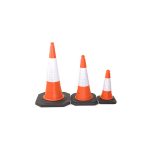Today scientists have multiple bioanalytical tools to assess analytes in complex study materials. Methods such as LC-MS/MS analysis and MSD assays are proving beneficial in drug development studies. Meso Scale Discovery (MSD) has numerous assays to quantify analytes in biological samples. These assays offer precise and accurate quantification of analytes in complex matrices. Besides, they have alternatives such as MSD mouse cytokine panels and MSD immunology assay. The current article discusses equipment and processes inside an MSD lab.
Inside an MSD Lab
MSD technology is a robust platform for measuring molecules in study matrices. MSD platform can profile biomarkers and can have a direct impact on drug development and human health. It employs electrochemiluminescence detection and multi-array technology to provide multiplex capacities and enhanced sensitivity.
Electrochemiluminescence
MSD assays have electrochemiluminescence labels that, upon electrical stimulation, generate a light signal. This reaction forms the basis of all MSD assays. The following section explains the working principle of electrochemiluminescence detection.
- Firstly, MSD plates have high-binding carbon electrodes at the bottom. These carbon electrodes have ten times more binding capacity than polystyrene plates, providing easy binding of biological components.
- The electrochemiluminescence labels are conjugated with detection antibodies. These labels, also called sulfo-tag, provide ultra-sensitive detection.
- Once electricity stimulates the carbon electrodes, the Sulfo-tag labels generate light emission, whose intensity correlates to the concentration of analytes in the sample.
Multi-array Technology
Multi-array technology brings highly dense and rapid analysis of biological data. Besides, multi-spot plates help precisely quantify analytes in single-volume samples, requiring less effort and time than conventional immunoassays.
Multi-spot plates have arrays within each well that increases throughput and multiplexing capacities. Each well can have up to ten spots, further enhancing assay throughput.
Meso Scale Discovery instruments
MSD platform has two robust instruments: Meso sector S600 MM and Meso Quickplex SQ 120 MM.
Meso sector S600 MM is an ultra-sensitive imager. With a low-noise CCD camera and high-speed analysis, this instrument provides a broader dynamic range, higher sensitivity, and rapid read times. Moreover, it is designed through robust quality systems to deliver a reliable and industrial-grade throughput instrument for the most demanding technical environments.
Also Read: Challenges and Solutions for Good Practices Laboratory-Compliant GLP Labs in the Era of Biologics
On the other hand, Meso Quickplex SQ 120 MM is a more versatile instrument. This compact instrument delivers reliable results with low cost and simple workflows. The amalgamation of multiplexing capacities and rapid read times saves valuable samples and time while increasing productivity.
Immunoassays
MSD assays are explicitly designed for pharmacological and biomedical research applications. Moreover, the MSD platform eliminates several issues associated with conventional immunoassays while offering superior reliability, faster workflows, and higher sensitivity. Besides, multi-spot panels can help analyze several analytes in a single assay volume.
Also Read:
Also Read: A Comprehensive Guide to Understanding and Optimizing Your Results
Most MSD assays are based on the sandwich-immunoassay principle. MSD assay can come in 96-well or 384-well microplates with multiplexing capacities. Following is a sample protocol for the MSD sandwich assay.
- Incubate the assay plate with the capture antibody
- Wash unbound analytes
- Add calibrators and study samples to the MSD plate
- Add and incubate Sulfo-tag conjugated antibodies
- Add read buffer
- Analyze the result using the MSD instrument.



